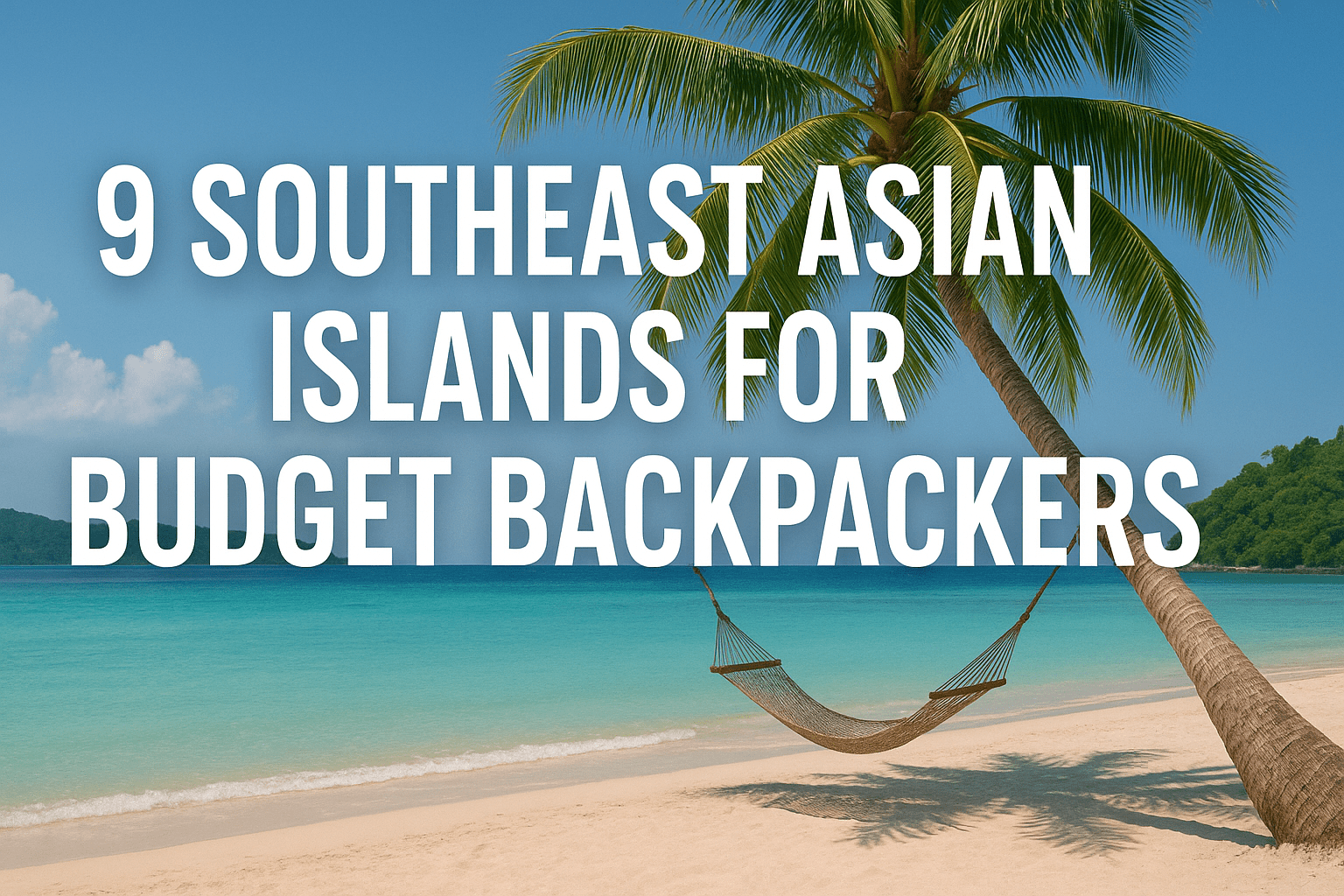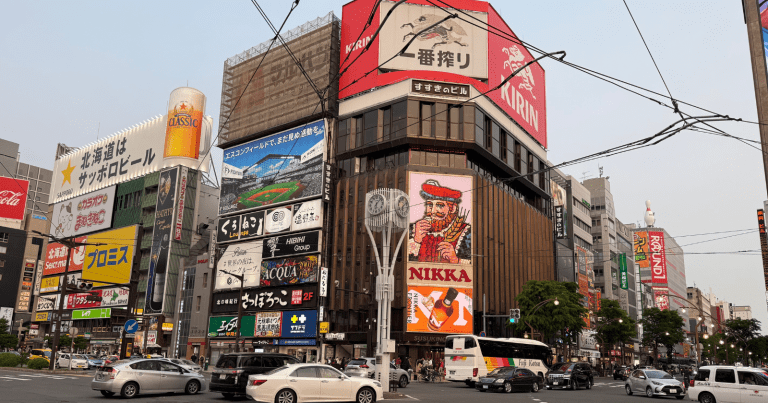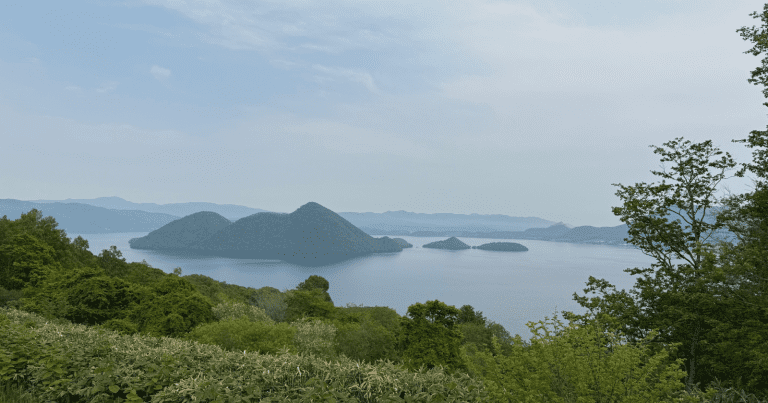
Let’s talk about that dream. White sand, turquoise water, a hammock swaying gently under a palm tree. Sounds idyllic, right? Now, let’s talk about the nightmare: shelling out a fortune for that slice of paradise. Most people assume island getaways in Southeast Asia are reserved for honeymooners with deep pockets. Wrong.
As your seasoned travel buddy who’s navigated these waters (often on a leaky slow boat), I’m here to tell you that the dream is absolutely attainable on a backpacker budget. The secret isn’t magic; it’s knowing which islands to hit and how to travel them smartly. This isn’t just a list of pretty places; it’s your actionable guide to enjoying stunning Southeast Asian islands without draining your bank account. You’ll learn the hacks for cutting costs on transport, finding cheap sleeps, eating like a local king for pennies, and unlocking the magic of these places affordably. Ready to swap budget anxiety for beach bliss?
Let’s dive into 9 Southeast Asian islands perfect for the budget backpacker Southeast Asia islands adventure you’ve been craving.
Strategy Set 1: Getting There, Staying Fed, and Sleeping Cheaply
The biggest myth about islands is that getting to them and staying there automatically costs a fortune. Not true, especially if you approach it with a backpacker mindset. Your journey doesn’t start when you hit the sand; it starts with smart planning from the mainland.
First, transport. Forget the speedboat tourist rip-offs unless absolutely necessary and you’ve negotiated hard. Local ferries and slow boats are your best friend for budget backpacker Southeast Asia islands travel. They take longer, yes, but they’re significantly cheaper and often offer a more authentic experience, allowing you to see the coastline and fellow travelers (local and foreign) at a human pace. Always check multiple sources for ferry schedules and prices – local agents, official websites, and even asking around at the pier the day before. Sometimes booking directly at the terminal saves you a small commission fee. Another tip: travel during the shoulder season. Flights and ferries are often cheaper, and you’ll find accommodation deals easier to come by. It’s a sweet spot between peak crowds and monsoon washouts.
Accommodation on islands can swing wildly in price. Avoid the fancy resorts and beachfront bungalows aimed at couples. Look slightly behind the main beach road. Guesthouses run by local families are usually the most affordable option. They might be basic – think cold showers, maybe a fan instead of AC – but they’re clean, safe, and offer a real connection to the local culture. Hostels are also popping up on many popular islands, providing dorm beds for incredibly low prices, plus a social atmosphere. My strategy? I usually book the first night or two online just to have a guaranteed bed upon arrival. After that, I walk around and ask guesthouses directly for their prices. Often, you can negotiate a better rate in person, especially if you plan to stay for several nights. Don’t be afraid to walk away and check the place next door. This hands-on approach often uncovers hidden gems that aren’t listed online.
Food is another area where backpackers can save massively. On islands, it’s easy to fall into the trap of eating every meal at tourist restaurants, which inflate prices due to location and imported goods. Don’t. Seek out the local markets and street food stalls. This is where you’ll find the most delicious, authentic, and affordable food. A plate of Pad Thai, Nasi Goreng, or fresh seafood grilled street-side can cost just a couple of dollars. Watch where the locals eat – that’s always the best sign. Buying fresh fruit from market vendors is also a cheap and healthy way to snack. Sometimes, I’d buy a bag of rice and some local curry paste or fresh vegetables from a market if my guesthouse had a communal kitchen (rare, but a bonus!). This allowed me to cook a few meals myself, drastically cutting down food costs.
Here’s a quick anecdote about learning the hard way: On my first trip to a Thai island years ago, eager to get to the sand, I paid way too much for a “joint ticket” from a tout near a busy ferry terminal. It included a slightly faster boat and a promised transfer on the other side. The boat was okay, but the “transfer” was a sardine-can pickup truck that dropped us miles from our accommodation. I saw locals paying half what I did for the standard ferry and easily catching local songthaews (pickup trucks) for cents. Lesson learned? Always scope out the local options and prices first. Don’t be rushed into paying tourist prices for convenience that often doesn’t materialise.
Be a traveler, not just a tourist, especially when budget is key.
Strategy Set 2: On-Island Hacks and Specific Island Spotlights
Once you’re on your chosen island, the money-saving doesn’t stop. How you get around locally is crucial. Renting a scooter or motorbike is popular and offers freedom, but be extremely cautious. Only do this if you are an experienced, confident rider with the correct license and insurance (your travel insurance likely won’t cover accidents if you don’t have a motorbike license). Accidents are unfortunately common. A cheaper and safer alternative is renting bicycles for short distances, or utilising local transport like songthaews, local buses, or simply walking. Negotiate fares for taxis or motorbike taxis before you get in. On smaller islands, walking is often the best (and free) way to explore beaches and villages.
Finding cheap or free activities is key to stretching your budget. Most islands boast incredible natural beauty. Spend your days swimming, sunbathing, snorkeling straight off the beach (bring your own mask and snorkel!), or hiking to viewpoints. Pack a sarong instead of a towel (lighter, dries faster), a reusable water bottle (many places have refill stations for cheap or free), and basic first-aid. These small packing choices save you money and hassle on the road. Technology can help too; offline map applications like Maps.me are invaluable for navigating without data, helping you find local spots and avoid getting lost (and paying for unnecessary transport).
Let’s look at some specific islands that are legendary in the budget backpacker Southeast Asia islands circuit:

1. Koh Lanta, Thailand: Less full-on party than some Thai islands, Lanta offers stunning long beaches and a relaxed vibe. It’s spread out, so renting a scooter is common (see note above!), but local taxis and tuk-tuks are available. The southern beaches tend to be quieter and offer slightly cheaper accommodation away from the main strip (Saladan). Food stalls and local restaurants along the roads offer fantastic value. A realistic budget here for a budget backpacker focusing on cheap eats and guesthouses? Around $30-45 USD per day.
2. Gili Trawangan (Gili T), Indonesia: Known for its lack of motorised transport (horses and bicycles rule!), Gili T used to be the ultimate budget paradise. Prices have risen, but it’s still doable. Avoid the main strip if you want quiet and cheaper sleeps; head inland or to the north/south of the island. Food stalls and small local warungs (restaurants) are scattered away from the sunset side. Snorkeling is easily accessible from the shore. Budget: $35-50 USD per day.
3. Koh Rong Samloem, Cambodia: Often cited as the laid-back alternative to Koh Rong, Samloem offers pristine beaches like Saracen Bay and Lazy Beach. Accommodation ranges from dorms to simple bungalows. Getting there is via ferry from Sihanoukville (shop around for tickets!). Food can be slightly more expensive than mainland Cambodia due to import costs, but local eateries exist. It’s the perfect place to just relax and enjoy nature, which is free! Budget: $25-40 USD per day.
Strategy Set 3: Delving Deeper and Uncovering Gems
Expanding your search beyond the most famous names is key to finding truly affordable island travel Asia. Sometimes the less developed or harder-to-reach islands offer the best value and a more authentic experience. This requires a bit more effort in research and logistics, but the payoff is worth it.
4. Phu Quoc, Vietnam: Vietnam’s largest island has seen significant development, but budget options still exist, especially away from the main Long Beach resorts. Look for guesthouses and smaller hotels in Duong Dong town or on less developed coasts. Renting a scooter is highly recommended to explore. The local night market in Duong Dong is fantastic for cheap seafood and Vietnamese dishes. Many beaches are free to access. Budget: $30-45 USD per day.
5. Port Barton, Palawan, Philippines: While El Nido and Coron grab the headlines (and higher prices), Port Barton offers similar stunning island-hopping scenery at a fraction of the cost. Accommodation is simpler (often fan-only, sometimes limited electricity hours). Food is basic but cheap. The main activity is island hopping, and while tours exist, you can often negotiate directly with local boatmen for a better price if you group up with others. Budget: $25-40 USD per day.
6. Nusa Lembongan, Indonesia: A short boat ride from Bali, Lembongan is far more relaxed and cheaper than its famous neighbour. Rent a scooter to explore the island, visit viewpoints, and find hidden beaches. Accommodation ranges from budget guesthouses to mid-range bungalows. Local warungs offer affordable Indonesian food. Yellow Bridge connects it to the even quieter and potentially cheaper Nusa Ceningan. Budget: $35-50 USD per day.
7. Cat Ba Island, Vietnam: The gateway to the less-touristed Lan Ha Bay (adjacent to Ha Long Bay), Cat Ba town has plenty of budget hotels and hostels. While boat tours into the bay are the main activity, you can find cheaper local options or opt for kayaking and hiking in Cat Ba National Park (entrance fee applies, but is reasonable). Eating local food in the town is very cheap. Budget: $25-40 USD per day.
8. Koh Kood (Koh Kut), Thailand: Known for its relatively untouched beauty and lack of mass tourism compared to nearby Koh Chang, Koh Kood feels more exclusive but can still be done on a budget. Look for simple bungalows or guesthouses away from the main bays, especially in the south or inland. Renting a scooter is almost essential here. Food options skew slightly more towards resorts, but local places and small shops exist if you explore. It’s not the cheapest Thai island, but offers immense value for its beauty and tranquility. Budget: $40-60 USD per day (can be higher or lower depending heavily on accommodation choice).
9. Bohol, Philippines: More than just beaches, Bohol offers the Chocolate Hills, tarsiers, and river cruises, alongside beach areas like Alona Beach on Panglao Island. While Alona Beach itself can be touristy, stay slightly back from the beach or in nearby villages for cheaper rooms. Renting a scooter is the best way to explore the diverse attractions inland. Local eateries and markets provide very affordable food. It’s a great mix of inland adventure and coastal relaxation on a budget. Budget: $30-45 USD per day.
For keeping track of budget specifics or finding less-known transport details, online traveler forums (like the Southeast Asia sections on TripAdvisor forums or specific Facebook groups for backpackers in a country) are invaluable resources. You can ask questions about current prices, transport options, and get recommendations for budget-friendly places directly from people who are there now or have been recently. Learning from other travelers’ experiences is a key part of travelling smarter.
Remember that daily budget estimates are just that – estimates. Your actual spend will depend on your travel style, how much you move around, and how many activities you do. These figures generally assume staying in budget guesthouses/hostels, eating mostly local food/street food, and using local transport or walking/biking. They don’t usually include expensive tours, lots of alcoholic drinks, or extensive shopping. They are designed to show that spending less than $50 USD per day is achievable on many of these islands.
And these islands are some of the most beautiful, yet accessible, pages in that book. Don’t let perceived high costs keep you from turning them. Travelling on a budget forces you to interact more with locals, find hidden spots, and appreciate simpler pleasures – often leading to a richer experience overall. By applying these savvy tips, you can unlock incredible island adventures without needing a trust fund.

Conclusion: Your Island Paradise Awaits
See? Island hopping in Southeast Asia on a budget isn’t just possible; it’s fantastic. By choosing the right islands and applying smart, actionable strategies – prioritizing local transport and food, seeking out budget accommodation away from the prime tourist spots, and embracing free natural attractions – you can significantly cut down costs. Remember to always ask local prices, be open to simpler comforts, and research transport options thoroughly.
These 9 islands offer incredible beauty and experiences that are genuinely accessible to the budget backpacker. Stop dreaming and start planning. With these tips in your arsenal, you’re ready to find your slice of island paradise without the hefty price tag. Go forth and explore these stunning shores wisely and affordably!







